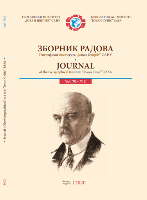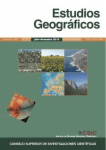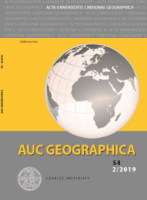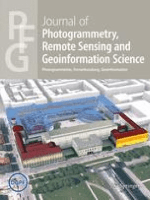
Journal of Geography-Chigaku Zasshi
Scope & Guideline
Navigating the Terrain of Knowledge in Geography
Introduction
Aims and Scopes
- Geosciences and Natural Hazards:
The journal focuses on geosciences, particularly in relation to natural hazards such as earthquakes, tsunamis, and volcanic activities. Research often includes geological assessments, risk evaluations, and disaster prevention strategies. - Environmental Changes and Management:
There is a significant emphasis on understanding environmental changes over time, including climate impacts, land use changes, and resource management strategies. This encompasses studies on ecosystems, hydrology, and pollution. - Geospatial Analysis and Remote Sensing:
The use of geospatial technologies and remote sensing plays a critical role in research, allowing for detailed analysis of geographical data, landforms, and environmental monitoring. - Cultural and Socioeconomic Geography:
The journal also addresses cultural and socioeconomic aspects of geography, exploring topics such as migration patterns, resource management, and community responses to environmental changes. - Paleogeography and Historical Geography:
Research in this area examines past geographical conditions and events, often linking geological findings to historical data to understand long-term environmental changes.
Trending and Emerging
- Disaster Risk Reduction and Resilience:
Recent issues have highlighted a growing focus on disaster risk reduction strategies, particularly in the context of natural disasters like earthquakes and tsunamis. This trend underscores the urgency of developing effective preparedness and response plans. - Climate Change Impacts:
There is a marked increase in studies addressing the impacts of climate change on geographical and environmental phenomena, emphasizing the need for adaptive management strategies in various sectors including agriculture and urban planning. - Interdisciplinary Approaches to Resource Management:
Emerging research emphasizes the integration of social sciences with natural sciences to address resource management challenges, reflecting a holistic view of environmental issues that includes human behavior and policy implications. - Technological Innovations in Geography:
The application of advanced technologies, such as machine learning and big data analytics, in geographic research is on the rise, facilitating more sophisticated analyses of spatial data and improving predictive modeling. - Sustainable Development and Urban Geography:
There is an increasing emphasis on sustainable development practices and urban geography, particularly in the context of managing urbanization and its environmental impacts.
Declining or Waning
- Traditional Mineralogy and Geochemistry:
Although mineralogy has been a significant focus, recent publications indicate a waning interest in traditional aspects of mineral studies, possibly overshadowed by more applied research in geochemistry and environmental sciences. - Historical Geoscience Studies:
Research centered on historical geoscience, while still relevant, has seen fewer contributions, likely as attention shifts to contemporary issues such as climate change and its immediate impacts on society and the environment. - Static Geological Mapping:
There appears to be a decline in publications focused solely on geological mapping without integrating modern technological approaches, such as GIS and remote sensing, which are increasingly favored in contemporary research.
Similar Journals

GEOJOURNAL
Illuminating Innovative Solutions in GeographyGEOJOURNAL, published by SPRINGER, is a distinguished academic journal that occupies a pivotal role in the fields of geography, planning, and development. With a robust ISSN of 0343-2521 and an E-ISSN of 1572-9893, it has been a cornerstone of scholarly communication since its inception in 1977. Operating from the Netherlands, GEOJOURNAL offers insightful research articles that delve into the dynamics of spatial analysis, environmental management, urban studies, and regional development, thus catering to a diverse readership of researchers, professionals, and students alike. The journal boasts an impressive Scopus ranking of #176 out of 821 in its category, positioning it in the top 22% percentile while maintaining a Q2 quartile ranking in Geography, Planning, and Development as of 2023. With access options available, GEOJOURNAL remains a vital platform for disseminating cutting-edge research and fostering academic collaboration, indispensable for those engaging with contemporary geographic challenges and innovative solutions. Engage with GEOJOURNAL to enrich your understanding and contribute to critical discussions in this ever-evolving field.

Geografisk Tidsskrift-Danish Journal of Geography
Advancing Geographic Knowledge, One Article at a Time.Geografisk Tidsskrift-Danish Journal of Geography, an esteemed publication by the Royal Danish Geographical Society, serves as a pivotal platform for disseminating innovative research in the realms of geography and earth sciences. Established in 1972, the journal has sustained its academic rigor through 2024, achieving Q2 quartile rankings in both Earth and Planetary Sciences and Geography, Planning and Development. With an ISSN of 0016-7223 and E-ISSN 1903-2471, this journal engages a global audience, including researchers, professionals, and students who seek to explore diverse geographical and environmental issues through high-quality research articles. Although currently non-open access, the journal thrives as a vital resource within the academic community, evidenced by its notable Scopus rankings, which place it in the upper percentiles of its respective categories. By providing critical insights into geographical phenomena, Geografisk Tidsskrift plays an integral role in advancing the understanding of complex spatial dynamics and fosters scholarly dialogue among geographers worldwide.

GEOGRAPHICAL REVIEW
Advancing Knowledge in Spatial Analysis and Environmental ProcessesGEOGRAPHICAL REVIEW, published by Taylor & Francis Inc, is a premier academic journal recognized for its influential contributions to the fields of geography and earth-surface processes. With an ISSN of 0016-7428 and an E-ISSN of 1931-0846, this journal has established itself as a vital resource for researchers, professionals, and students alike. The journal maintains a strong reputation with a Q1 ranking in both Earth-Surface Processes and Geography, Planning and Development, reflecting its scholarly impact and relevance in the academic community. Additionally, it holds a notable position in Scopus rankings, placing #181 out of 821 in Social Sciences and #45 out of 179 in Earth and Planetary Sciences. Although it is not open access, the GEOGRAPHICAL REVIEW remains essential for those seeking to expand their understanding of spatial analysis and environmental processes from its historical inception in 1969 to its ongoing publications through 2024. Explore rigorous research articles, critical reviews, and innovative studies that shape the discourse in geography and earth sciences today.

Journal of the Geographical Institute Jovan Cvijic SASA
Unlocking insights into our planet's processes and people.The Journal of the Geographical Institute Jovan Cvijic SASA is a premier academic publication dedicated to advancing research and knowledge in diverse fields such as Demography, Earth-Surface Processes, Geography, Geology, and Tourism. Published by the Geographical Institute Jovan Cvijic SASA in Serbia, this Open Access journal has made significant contributions to the academic community since its inception in 1951, allowing for unrestricted dissemination of research findings globally. With an impact factor reflected in its 2023 Q3 quartile rankings across several categories, the journal underlines its relevance by maintaining a significant standing in the Social Sciences and Earth and Planetary Sciences domains, demonstrating engagement at a global level evidenced by its Scopus rankings. The journal's commitment to publishing high-quality, peer-reviewed articles makes it an essential resource for researchers, professionals, and students seeking to explore and enhance their understanding of geographical and environmental dynamics.

Estudios Geograficos
Exploring the Dynamics of Our PlanetEstudios Geograficos, a prominent journal published by the CONSEJO SUPERIOR INVESTIGACIONES CIENTIFICAS-CSIC in Spain, serves as a vital platform for advancing the fields of geography and earth-surface processes. With an ISSN of 0014-1496 and E-ISSN of 1988-8546, the journal has been committed to Open Access since 1996, ensuring that its valuable research is accessible to a global audience. Recognized as a Q3 journal in both Earth-Surface Processes and Geography, Planning and Development, it plays a crucial role in shaping understanding and policy related to our planet. As of 2023, it holds a respectable rank of 562nd in Social Sciences Geography and maintains a percentile standing, reflecting its significance within the academic community. Covering a diverse range of topics, Estudios Geograficos aims to foster scholarly dialogue and disseminate innovative interdisciplinary findings, providing researchers, professionals, and students with critical insights and tools to address contemporary geographic challenges.

AUC Geographica
Advancing Knowledge in Geography and Planetary SciencesWelcome to AUC Geographica, a distinguished journal published by CHARLES UNIV PRAGUE, KAROLINUM PRESS, focusing on the expansive and interdisciplinary fields of Earth and Planetary Sciences, as well as Geography, Planning, and Development. With an ISSN of 0300-5402 and an E-ISSN of 2336-1980, this Open Access journal has been freely accessible since 2010, allowing researchers, professionals, and students to engage with high-quality scholarly articles without barriers. As of 2023, it holds a Q4 ranking in its respective categories, reflecting its commitment to contributing to the academic discourse despite competitive landscapes. Located in Prague, Czech Republic, at OVOCNY TRH 3/5, PRAGUE 1 116 36, AUC Geographica aims to foster collaboration and innovative research in the multifaceted relationships between human activities and the natural environment. With a publication history spanning from 1975 to 2024, this journal continues to be a vital resource for those seeking to advance knowledge and explore new dimensions in geography and Earth sciences.

Boletim de Ciencias Geodesicas
Elevating Scholarship in Earth and Planetary Sciences Since 1997Boletim de Ciências Geodésicas is an esteemed academic journal published by the Universidade Federal do Paraná within its Centro Politécnico. Focused on the dynamic field of Earth and Planetary Sciences, this Open Access journal has been a pivotal resource since 1997, fostering the dissemination of critical research and innovative methodologies. With an impact factor indicative of its relevance in the discipline, Boletim de Ciências Geodésicas ranks in the Q3 quartile for Earth and Planetary Sciences as of 2023, showcasing its commitment to quality scholarship in a competitive field. Researchers and students alike will benefit from access to cutting-edge findings, given its broad scope that encompasses various aspects of geodesy and related sciences. The journal's convergence of research from 2005 to 2024 ensures that it remains at the forefront of emerging trends and fundamental developments in the discipline, further enhancing its esteemed reputation in the academic community.

Geoadria
Connecting Researchers in Geography and DemographyGeoadria, an esteemed Open Access journal published by the University of Zadar in Croatia, has been at the forefront of disseminating valuable research since its inception in 1996. With a keen focus on atmospheric science, demography, earth-surface processes, and geography, this journal serves as a crucial platform for researchers and professionals aiming to explore the intricate relationships between these fields. Although it currently holds a Q4 quartile ranking in various categories, such as Atmospheric Science and Geography, its commitment to promoting innovative scholarly dialogue ensures its relevance and utility within the academic community. Geoadria is indexed in Scopus, with rankings that reflect its ongoing contribution to the social sciences and earth sciences, notably garnering attention in niche areas. With a dedication to open access since 1996, the journal stands as a testament to the University of Zadar's commitment to enhancing global knowledge. Researchers, professionals, and students interested in geography, demography, and environmental sciences will find Geoadria a vital resource for the latest empirical studies and theoretical discussions.

Geographia Cassoviensis
Connecting Scholars to the Heart of Geographical InquiryGeographia Cassoviensis, published by the Pavol Jozef Šafárik University, Faculty of Science, Institute of Geography, is a pivotal platform for scholarly exploration in the fields of Earth and Planetary Sciences and Geography. Established in 2016, this journal has rapidly developed into a valuable resource for researchers and practitioners seeking to understand the intricate facets of geographical and environmental dynamics. With an ISSN of 1337-6748 and an E-ISSN of 2454-0005, Geographia Cassoviensis is indexed in Scopus and holds a position in the Q4 quartile for both its submission categories as of 2023, reflecting its burgeoning impact within the scientific community. Located in Kosice, Slovakia, this journal invites contributions that further the discourse in geography, planning, and related environmental studies. Although currently not an open-access journal, it aims to foster a deeper understanding of geographical concepts and their applications across diverse realms, making it a vital resource for students, researchers, and professionals alike.

PFG-Journal of Photogrammetry Remote Sensing and Geoinformation Science
Bridging Disciplines for a Better TomorrowPFG-Journal of Photogrammetry Remote Sensing and Geoinformation Science, published by Springer International Publishing AG, stands as a prestigious peer-reviewed journal at the intersection of cutting-edge technology and the vital disciplines of Earth and Planetary Sciences, Geography, and Instrumentation. With an impressive impact factor and ranking within the Q1 category, this journal regularly publishes innovative research, methodologies, and case studies that drive advancements in the field. As of its converged years from 2017 to 2024, the journal focuses on the latest trends in photogrammetry, remote sensing, and geoinformation science, providing a crucial platform for researchers, professionals, and students alike. Its open access model ensures that findings are widely accessible, fostering collaboration and knowledge dissemination throughout the global scientific community. Located in Switzerland, geographical and technological diversity is embraced, making the PFG Journal an essential resource for those dedicated to exploring the complexities of our planet and contributing to sustainable development.